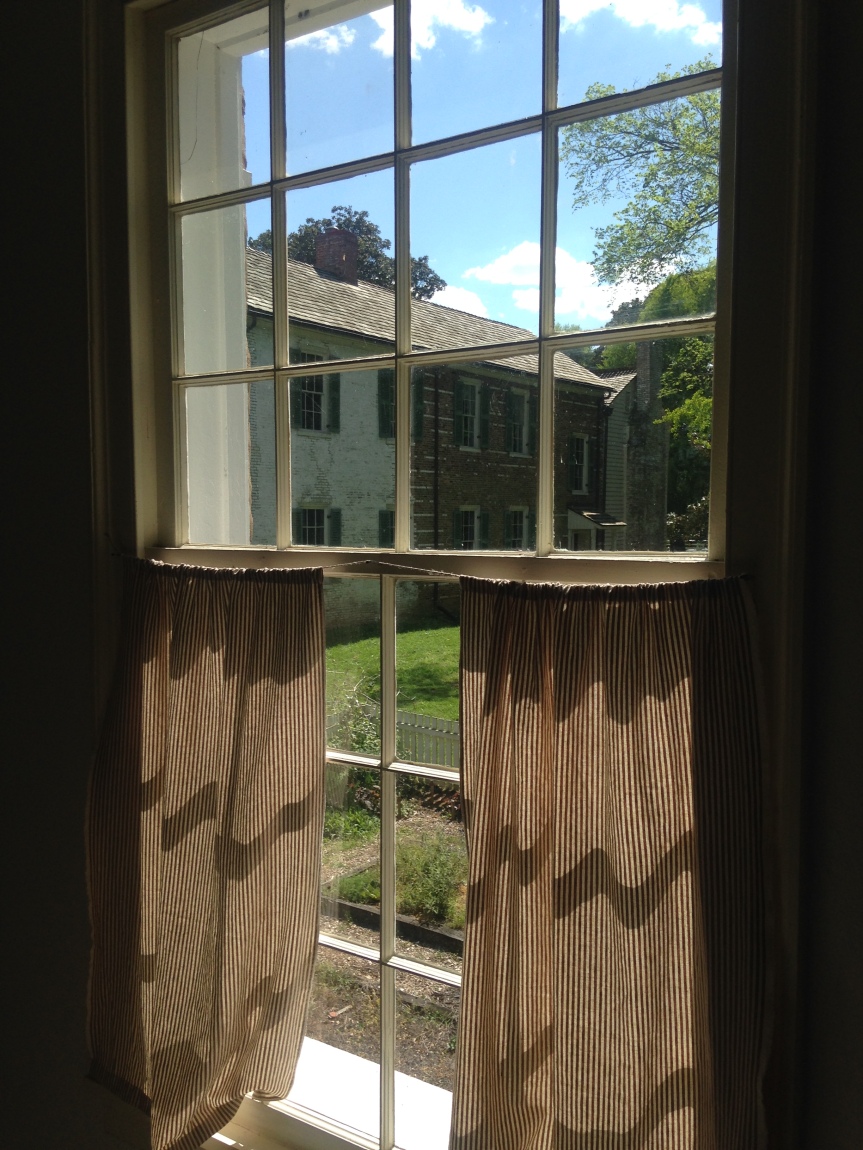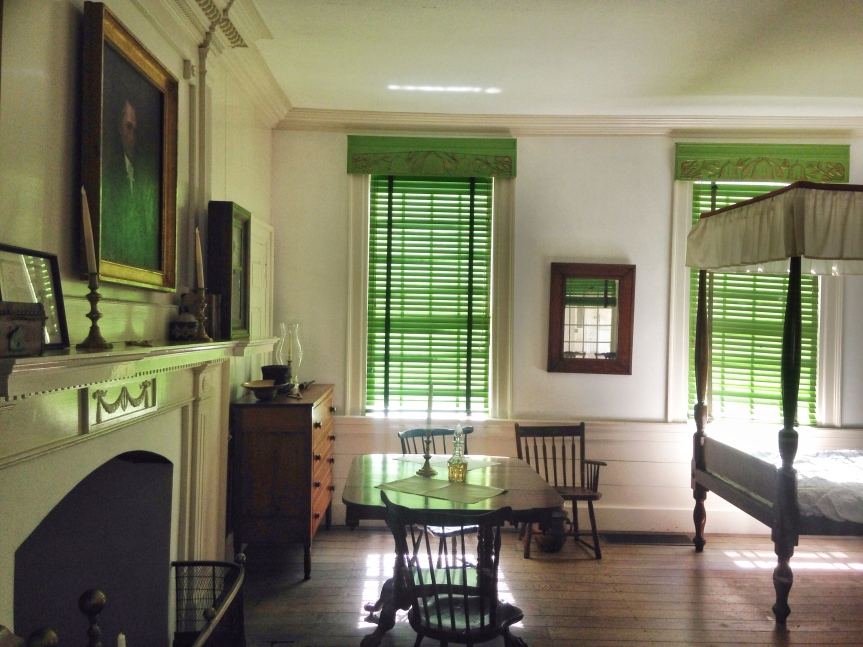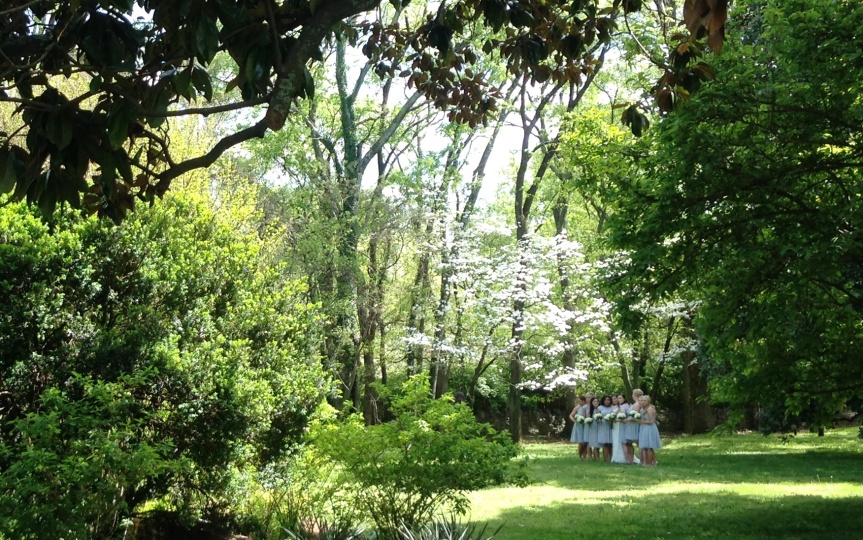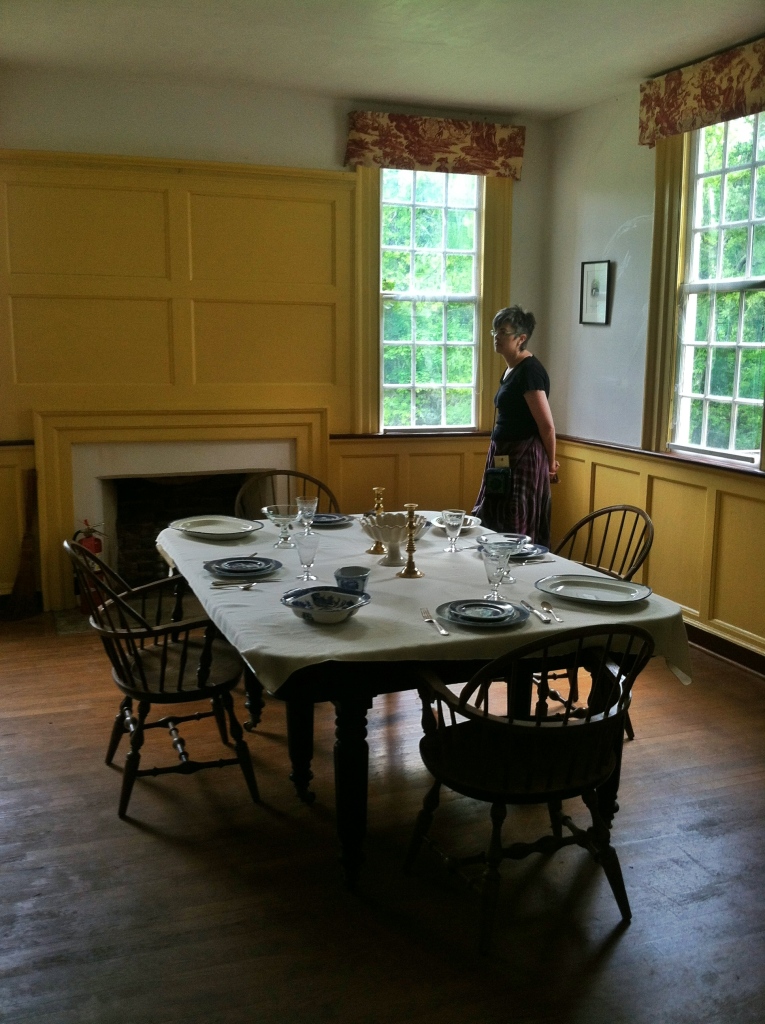When I was little I had a children’s book about Andrew Jackson. All I remember of that book is an image of a British soldier raising his saber as if to strike the little boy before him. The little boy, Andrew, had just refused to shine the soldier’s boots and was rewarded with a lifelong scar on his face and arm. That is all I thought I remembered till I drove past the sign that read, “Hermitage next exit”. I cut across two lanes to get off the highway. I apparently remembered that word as well.
Visiting historical sites on Wednesday afternoons in winter makes for a semi solitary experience. The visitor center parking lot was nearly empty when I pulled in. It was completely empty by the time I left.
I walked into the center still remembering very little about our country’s 7th president. I know now I remembered so little because that was all I ever knew. I remember the song about a battle using alligators as cannons and I knew he looked a little like an angry version of Albert Einstein, but it wasn’t till then, the moment I walked down a hall flanked by two life sized posters of Black people that it really hit me; of course he owned slaves.
The two posters gave two descriptions, one each, of two people born as slaves to Mr. Jackson, one who stayed on with the family after the civil war, the other fled to Union lines. I though it a bit unusual that these stories would hold such a prominent position, I hadn’t even seen a plaque telling anything of Andrew yet, and I continued on a bit more interested. I was curious about Ol’ Hickory.
Leaving the visitors center I walked across a grassy tree lined walk, and was greeted by a man wearing an old timey trench coat, the kind with a built in two layered cape about the shoulders. He was pleasant and welcoming, opened the front door, and passed me off to an older woman wearing petticoats and a bonnet. She quickly told me no pictures.
This historical home is a bit different than so many others I’ve visited. All the stuff is still there. The tour guides explained that President Jackson’s son sold the home and all its furnishings to a preservation foundation, which still owns it to this day, and thanks to them I could now see the original Parisian wallpaper that tells the pictorial tale of Homer’s Odyssey. I saw Jackson’s riding switch whittled from a sapling that grew at Mt. Vernon, I saw his muzzle loading black powder rifle, and I saw his bedroom slippers set on the floor next to his original bed linens. The place and its furnishings were beautiful, the history felt real and not forced. Preserved rather than presented. I appreciated that.
We, myself and the grey haired couple who made up the rest of my tour, were also told a bit about the man.
He joined the continental army at the age of 13. He was orphaned by 15. He passed the bar with little formal education then moved into a little log cabin to scrape out a fortune as a cotton farmer. They mentioned he was shot in the chest during a duel, that he won the battle of New Orleans, was the provisional governor of Florida, and that his wife died just days before he was sworn in as president. Fascinating man.
Once upstairs, while looking at the children’s original bedroom furnishings, yet another guide explained that in this room with one bed lived two little girls along with their maid. This struck me as odd, not the girls sharing a room, but the maid quartering there as well.
“Wait. The maid slept here as well? Who was the maid?”
“The Maid was Hannah. She was a slave.”
“Was that normal? I have been to several other homes where the servants had their own quarters.”
“Well where else would they sleep? She had to be with the young children. She was their nurse.”
“In the other homes they slept upstairs.”
“Like the attic? There is some attic space inn this home but no evidence that any slaves stayed there. It is true that slavery was an unfortunate situation but President Jackson was far more lenient than others of his day. He let them learn to read and do as they pleased. He believed a man should be able to rise as far as his abilities would allow. He let them marry and tried to keep families together. So while slavery was an unfortunate situation Andrew Jackson was far better than so many of his day.”
I wondered at this statement. I was tempted to start googling on my phone right there to see what I could find of his treatments of the slaves, but I didn’t. I could see the guide was agitated. She didn’t like my questions, possibly because she thought I was trying to make Jackson look bad in front of these other tourists, or perhaps she was just uncomfortable with slavery. She spoke quickly enough to prove she was not just uninformed. She had responses from which to draw.
She went on to tell how he grew his wealth on his own, starting as an orphan, then laboring as a lawyer till he had the money to buy a farm. She was obviously very proud of what he had accomplished. I kept the rest of my questions to myself and continued on the tour. I was honestly curious about this place and the man. Unlike my normal self I was not trying to pick a fight or make any points, I was too uninformed. This guide’s demeanor had already told me how she felt about things, I would Google later.
Outside the back porch was a completely different story. Walking through the back door the first thing you see is a small log duplex. Beyond that there were more of the same.
Slave quarters. Recreated, visible, prominent, slave quarters.
A path winds its way back through the property lined with informational plaques, most of which dealt with the people who lived and worked behind the big house. The stories these stations told were not apologetic but rather quite damning. One told the story of Alfred. Alfred was the man who stayed on at the Hermitage after emancipation. Not only did he stay on but is buried in a marked grave right next to Andrew Jackson. Highly unusual. A plaque tells the story of how one day The Jackson children were walking the property with their tutor and came across a forlorn Alfred. They inquired what was the matter and he simply stated, “You white folk sure have an easy life.” The tutor replied that Alfred didn’t have it so bad with a roof over his head, a kind master, and that freedom had its own challenges.
Alfred looked at him and just inquired, “Would you rather be a slave?”
There were a dozen more similar displays throughout the plantation. I have never seen such a thing. Not at Mt. Vernon, Monticello, Montpellier, Roswell, Cliveden, anywhere in Savannah or Charleston, nowhere. What a contrast to the story the woman told me inside. Remarkable.
I have never been to an historic “great” home that presented such a complete picture of life in that time and location. The combination of original furnishings both grand and humble, information both lauding and condemning struck closer to the truth than anywhere I have visited.
What a contrast to the guide who was so bothered by my questions. I wish she would have been more direct rather than protective in her answers.
I think it would be so instructional to consider how remarkable and horrible Andrew Jackson was. It would, could, serve as such a lesson to people like me today. Consider this man. He was obviously more devoted to country than I enlisting in the army at age thirteen. I was a young adult when my country was attacked by terrorists. I did not enlist. This man while fighting a duel stood his ground allowing another man to fire a bullet into his chest, stayed on his feet, and then returned fire killing the man. I will never be that brave. This man with little formal education passed the bar, had the wisdom to not only invest in land but instructed a cotton gin to be built on his own property allowing him to become more self-sufficient in his business. He was smarter than me. This man became president. I will never rise that high. He was better than me.
But this man, better than me, was still capable of ordering that a woman be whipped due to her attitude. This man was willing to kill another man over a disputed horse race. This man was responsible for the national policy of removing a native race of Americans from their homes to desolate and unwelcome reservations. This man valued his personal luxury above the lives of black people.
He was a better man than me and still capable of such horrible things. What a great warning to us today. So sad that we often have to look under the rug to get such a lesson.


















